

We hosted a sustainability focused call for investors on 25 February 2022. In the call, Wärtsilä’s President & CEO Håkan Agnevall, Kari Hietanen, EVP, Corporate Relations and Legal Affairs, and Marko Vainikka, Vice President, Corporate Relations and Sustainability, gave deeper insight on how Wärtsilä can make a difference in the decarbonisation of the marine and energy markets. Also the rationale for Wärtsilä’s decarbonisation targets was elaborated further.
The recording of the event is available here, and the presentation material can be found here.
At the beginning of the event, our CEO Håkan Agnevall gave an introduction on Wärtsilä’s strategy, which is strongly focused on decarbonisation. Wärtsilä’s target position is to shape the decarbonisation of Marine and Energy. The energy industry is moving towards 100% renewable future, and the marine industry is adopting new regulations, while the demand for green transportation is constantly increasing. Wärtsilä has the leading offering to support its customers in decarbonisation.
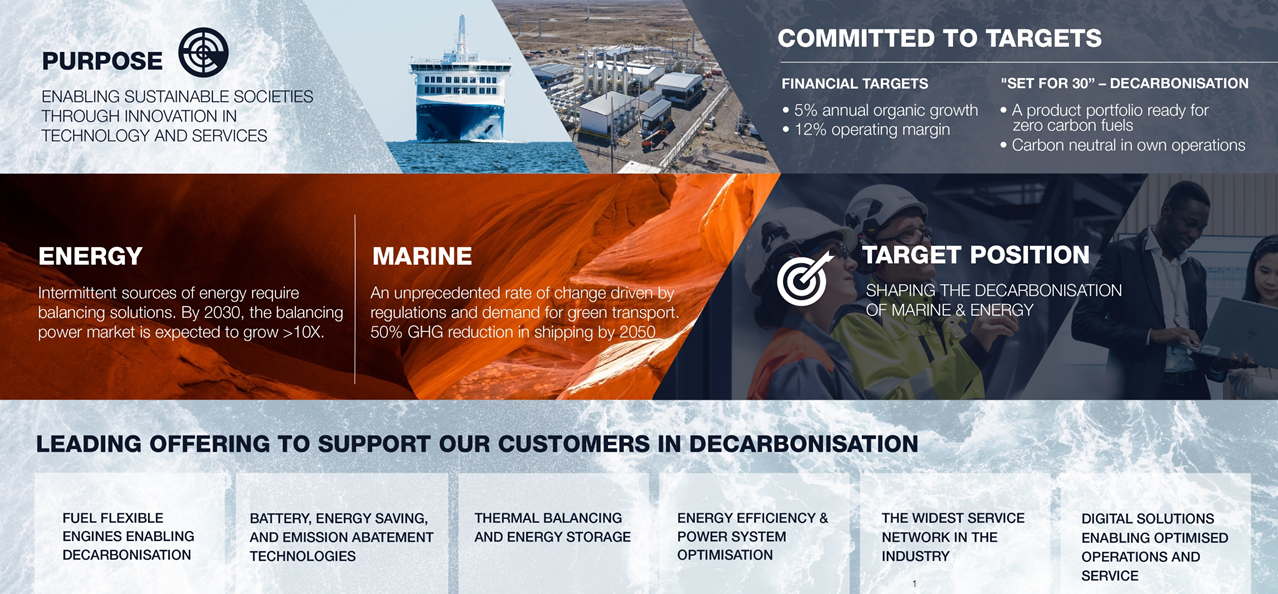
After Håkan, Kari Hietanen, EVP, Corporate Relations and Legal Affairs, stepped onto the stage. Kari further presented Wärtsilä’s ambitious decarbonisation targets for 2030, which are the following:
- To provide a product portfolio which will be ready for zero carbon fuels
- To become carbon neutral in our own operations
Global greenhouse gas emissions are over 52 Gt CO2e, of which 2% is represented by the shipping sector and 30% by electricity and heat production (World Resource institute, 2018). Our customers’ emissions in Wärtsilä Marine installed base are 150-300 Mt CO2e (estimated) and in Energy 150-340 Mt CO2e (estimated). Hence, by decarbonising our products, Wärtsilä will have a major impact in the decarbonisation of the Marine and Energy industries. However, the impact at a system level will be even bigger; for example, Wärtsilä’s balancing plants enable the maximum use of renewables, and our digital solutions help to further improve efficiency in shipping. Wärtsilä’s other indirect GHG emissions from the delivery chain amount to 2,200 kt CO2e (estimated).
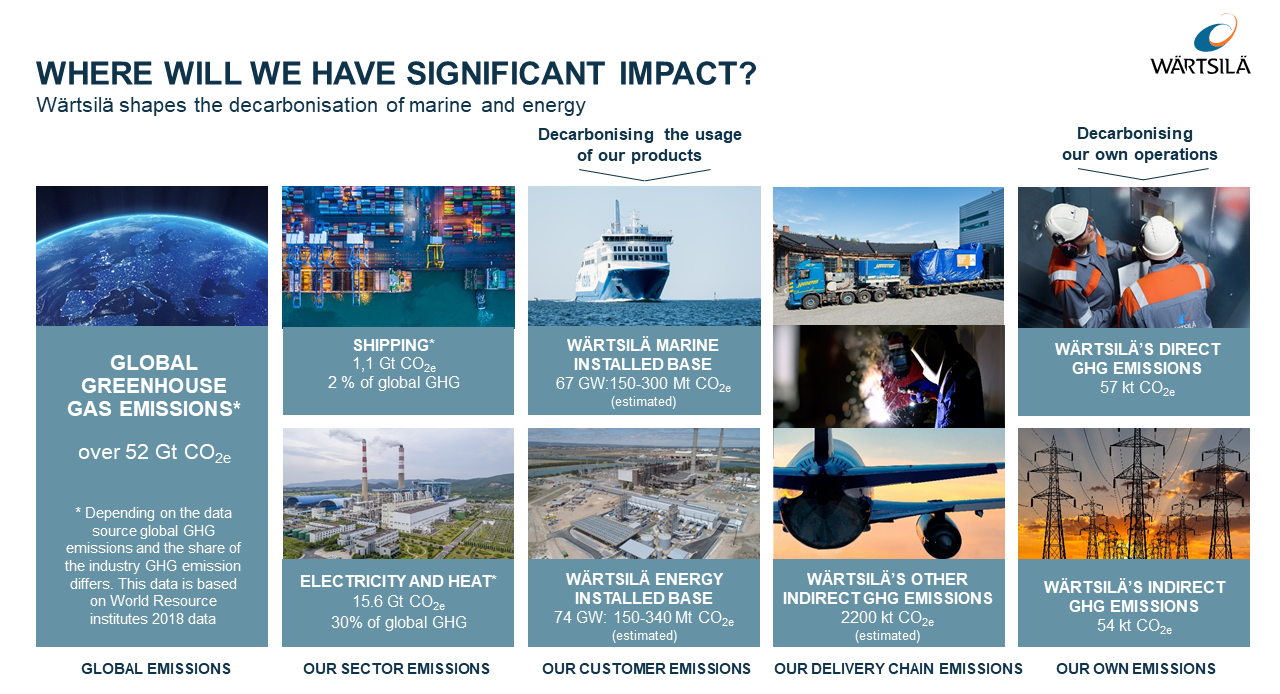
Target 1: Product portfolio ready for zero carbon fuels
Thermal balancing power is needed in the decarbonisation of the energy sector. A transition from coal to gas is required, and fossil baseload energy needs to be replaced with renewables. When renewables take over a bigger role in the electricity system, intermittency will increase, and there will be an increased need for balancing capacity and energy storage. The transition to green fuels will be done as a final step. Wärtsilä’s power plants will be capable of running on carbon neutral and zero carbon fuels as well as enable the use of hybrid solutions.
Decarbonising the marine sector requires a wide range of measures as the price of emitting carbon is constantly increasing. The most important measure is the decarbonisation of powertrains, followed by increasing energy efficiency and optimisation of the logistic chains. Wärtsilä’s powertrain solutions are future-proofed for fuel flexibility, and our digital solutions help in optimising fleet and vessel operations.
Target 2: Becoming carbon neutral in our own operations
Wärtsilä’s own GHG emissions amount to 111 kt CO2e, of which 57 kt are direct (scope 1) and 54 kt indirect (scope 2). A major part of the direct emissions comes from engine testing (55%), whereas indirect emissions come from purchased electricity and heat. Wärtsilä’s goal is to reach carbon neutrality in both scope 1 and scope 2 emissions by 2030. Reaching the goal requires actions on a broad front, such as energy efficiency measures, developing R&D and factory testings, and utilising green electricity. The actions are already starting: during 2022, Wärtsilä will start to purchase green certified electricity in Finland.
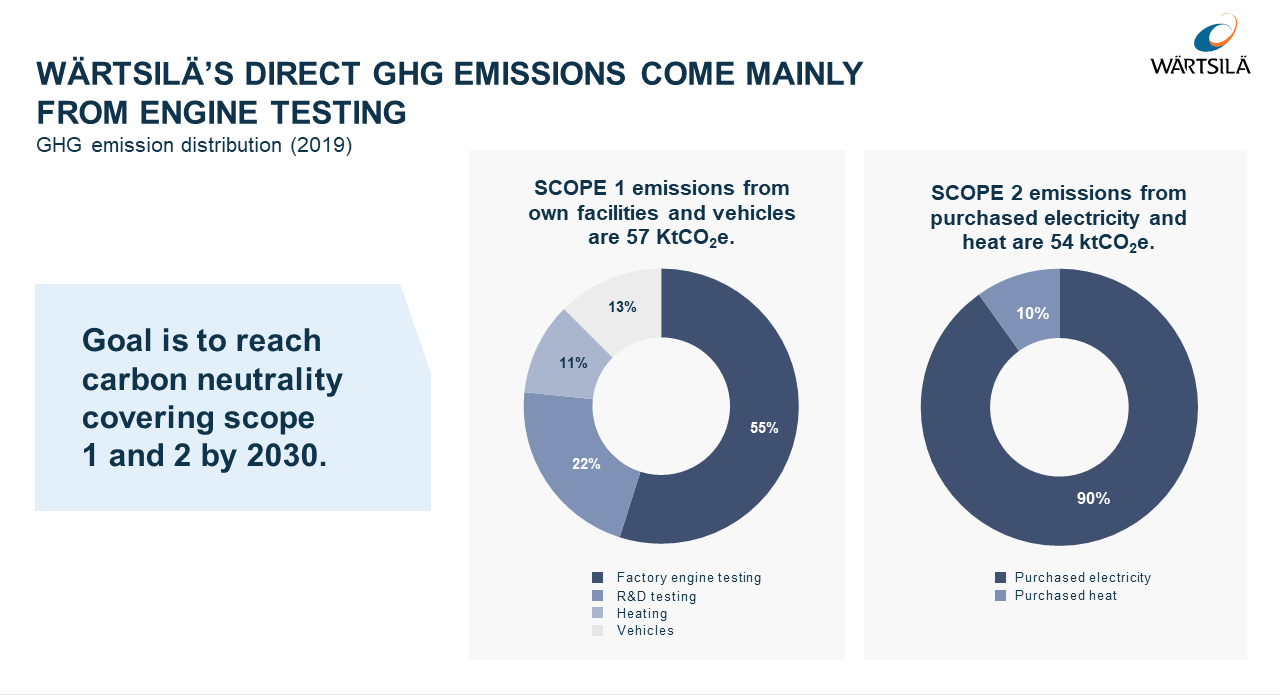
Taxonomy reporting
Marko Vainikka, VP, Corporate Relations and Sustainability continued the presentation by discussing the EU’s sustainable finance taxonomy reporting obligation. The EU taxonomy is a common classification of economic activities that contribute significantly to environmental objectives. However, it does not acknowledge value chain or system level impacts and benefits, which are extensive in Wärtsilä’s case.
Wärtsilä has analysed its taxonomy eligible economic activities for 2021. 8% of our 2021 revenues were taxonomy eligible, including energy storage business, biogas solutions, and digital voyage optimisation solutions. 22% of CapEx and 8% of OpEx were taxonomy eligible.
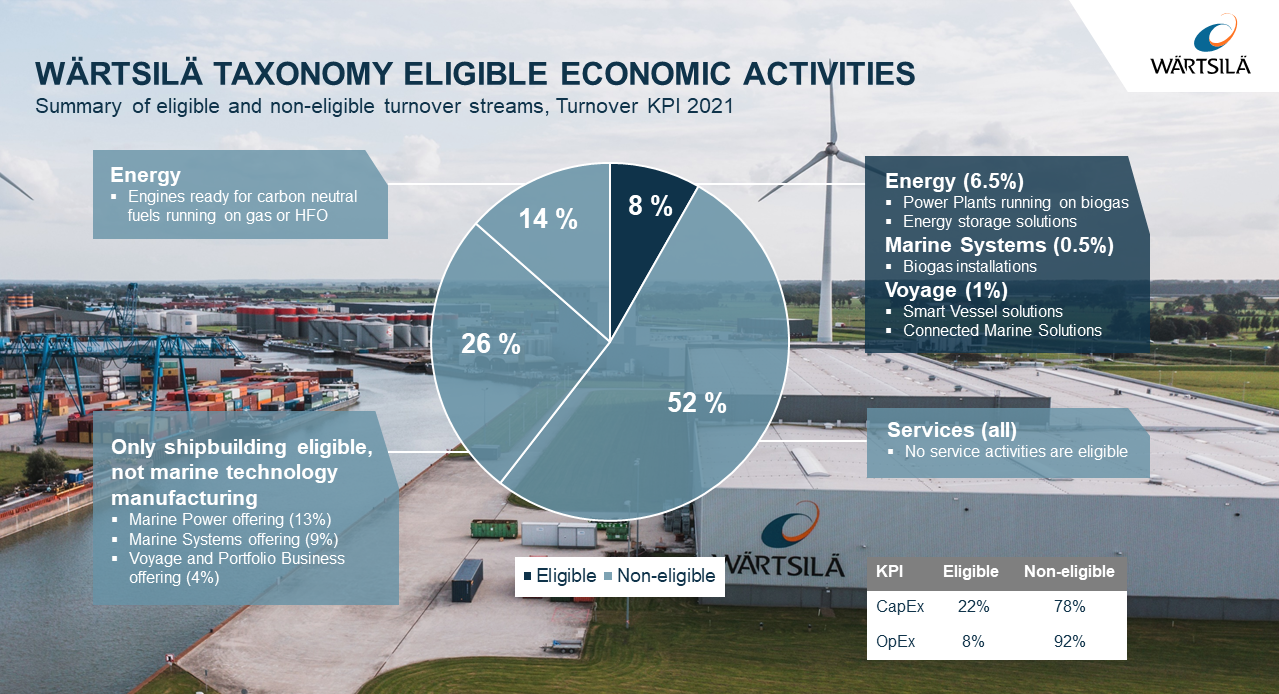
Wärtsilä is already providing technologies that help to decarbonise the Marine and Energy sectors, although only a small part of them are taxonomy eligible. The picture below lists some of Wärtsilä’s technologies that contribute to the sustainable development of our industries:
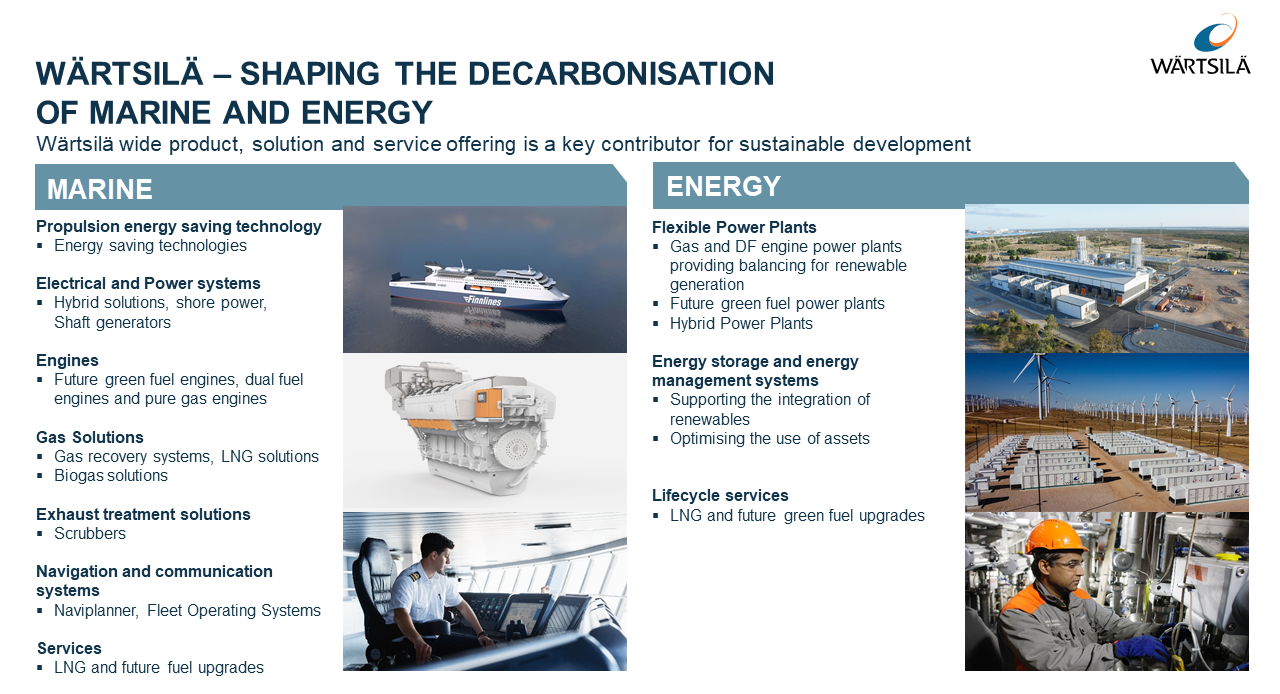
The call ended with a Q&A session, and there were many interesting questions coming from the audience. The Q&A session starts at 44:45 in the recording of the event.